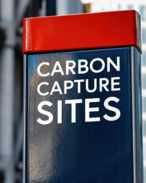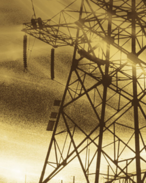This article is 18 years old. Images might not display.
Its internal investigation into the economics of restarting one of two methanol trains at the 1.8 million tonne facility is due to be completed before Christmas.
Any restart at Motunui would be widely welcomed by the Taranaki community, particularly the region’s petrochemicals workforce and Port Taranaki, which has suffered major falls in revenue since Methanex started curtailing methanol production in 2004.
“Methanex New Zealand is carrying out a feasibility study that will help determine the feasibility and cost of restarting one plant at Motunui,” Methanex New Zealand managing director Harvey Weake told PetroleumNews.net.
“Since the plant closed in December 2004, we have said that the best scenario would be to reopen. But we are also considering other possibilities, such as moving one methanol unit to a different location.”
Neither he nor company spokesperson Gerry Kennedy would comment on likely destinations for a mothballed methanol train that once produced up to 800,000 tonnes of product a year.
Methanex has low-cost gas manufacturing facilities in Chile and Trinidad, and has recently been reported as considering constructing another low-cost facility in South-East Asia.
Methanex once employed more than 300 workers at its Taranaki synthetic petrol and methanol plants. The gas-to-gasoline part of the Motunui complex closed several years ago and was later sold for scrap to Asian interests.
When the company mothballed the Motunui complex, that left only 80 or so people at the smaller Waitara Valley plant, which currently runs as an intermittent swing producer.
Auckland-headquartered Methanex recently restarted the valley plant, citing high global methanol prices and firm short-term supplies of domestic gas as reasons to start production again. It plans to run that plant at full capacity until at least the end of the year, using about 5-8 petajoules of a gas to produce up to 180,000 tonnes of methanol.
Industry sources have told PetroleumNews.net that Methanex would need to cobble together at least 20-30PJ of gas, probably from various sources, to make a partial restart of Motunui worthwhile. At full capacity, the twin trains consumed up to 70PJ of gas a year.
Port Taranaki has lost several million dollars in revenue since the Motunui closure, with port chief executive Roy Weaver describing the drastic drop in methanol volumes as being “very keenly felt”.
“We would be delighted to see methanol production increase and volumes rise through the port, given that there seems to be more domestic gas around now than a year ago,” said Weaver, regarding news of the Methanex restart study.
Weake told the 2006 NZ Petroleum Conference in Auckland in March that he did not know if his company would be at the next biennial conference, given that its New Zealand operations had gone from 100% capacity to about 20% capacity in less than two years, with the associated $NZ1 billion ($A888 million) loss of foreign exchange earnings.
He also said the longer the Motunui complex was idle, the less likely it would be to restart. The former $2 billion site would have little economic value if it was still unused after five years, he added.






















